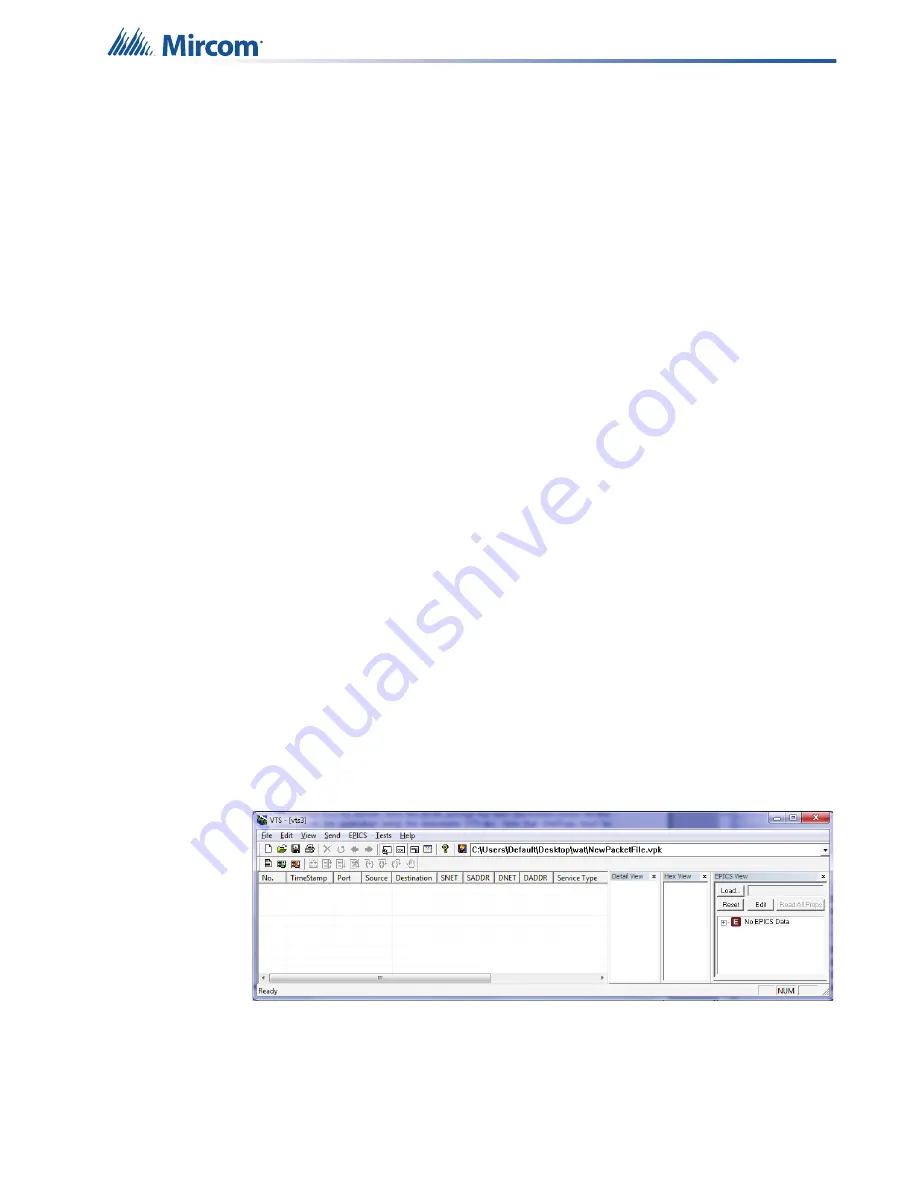
116
Connecting to a BACnet system
1. Press the Discover button and a Discover dialogue box will appear.
2. Ensure that all check boxes on the left are selected. Select the All check box beside the
Network field.
3. In the Low Device Instance field enter the Device ID of the FACP that was set in the
configuration.
4. In the High Device Instance field enter a value one greater than the Device ID. Setting
this range ensures that only objects associated with the FACP will be discovered.
5. Press Send to begin the discovery process.
Note that sometimes the software will report errors while discovering, this will not affect the
outcome of the discovery. Once the discovery is complete the main window should display a
populated tree consisting of all the objects associated with the FACP. If the list does not
appear or is incomplete repeat the discovery process with all options selected.
The CAS BACnet explorer can also be used to monitor any changes in the properties of any of
the objects associated with the FACP. Once objects have been discovered the populated tree
can be expanded and individual objects can be selected. Each object can be expanded to
view its parameters and properties. To monitor an object right click on it and select “Add this
object to monitor list”. Repeat this for each object that needs to be monitored.
Objects will be monitored using default properties however the list of default properties may
not included all required properties. To set properties to be monitored click on the settings icon
and the Settings window appears. Use the Add and Remove buttons to select properties.
Press OK to confirm the settings.
Once objects and properties to be monitored are selected press the Monitor button in the main
window. All the objects to be monitored will be displayed in a new window titled Monitor List.
This window will display any changes in properties as they happen in real time.
17.7
Visual Test Shell
Visual Test Shell (VTS) is an application that is able to monitor BACnet objects and
communicate with BACnet devices to acknowledge alarms. It is freeware and can be
downloaded from: http://sourceforge.net/projects/vts/. Once the zip file package has been
downloaded extract the files and launch the application using the executable VTS.exe. Note
that WinPcap must be installed in order for the VTS application to launch.
Figure 84 Visual Test Shell






























